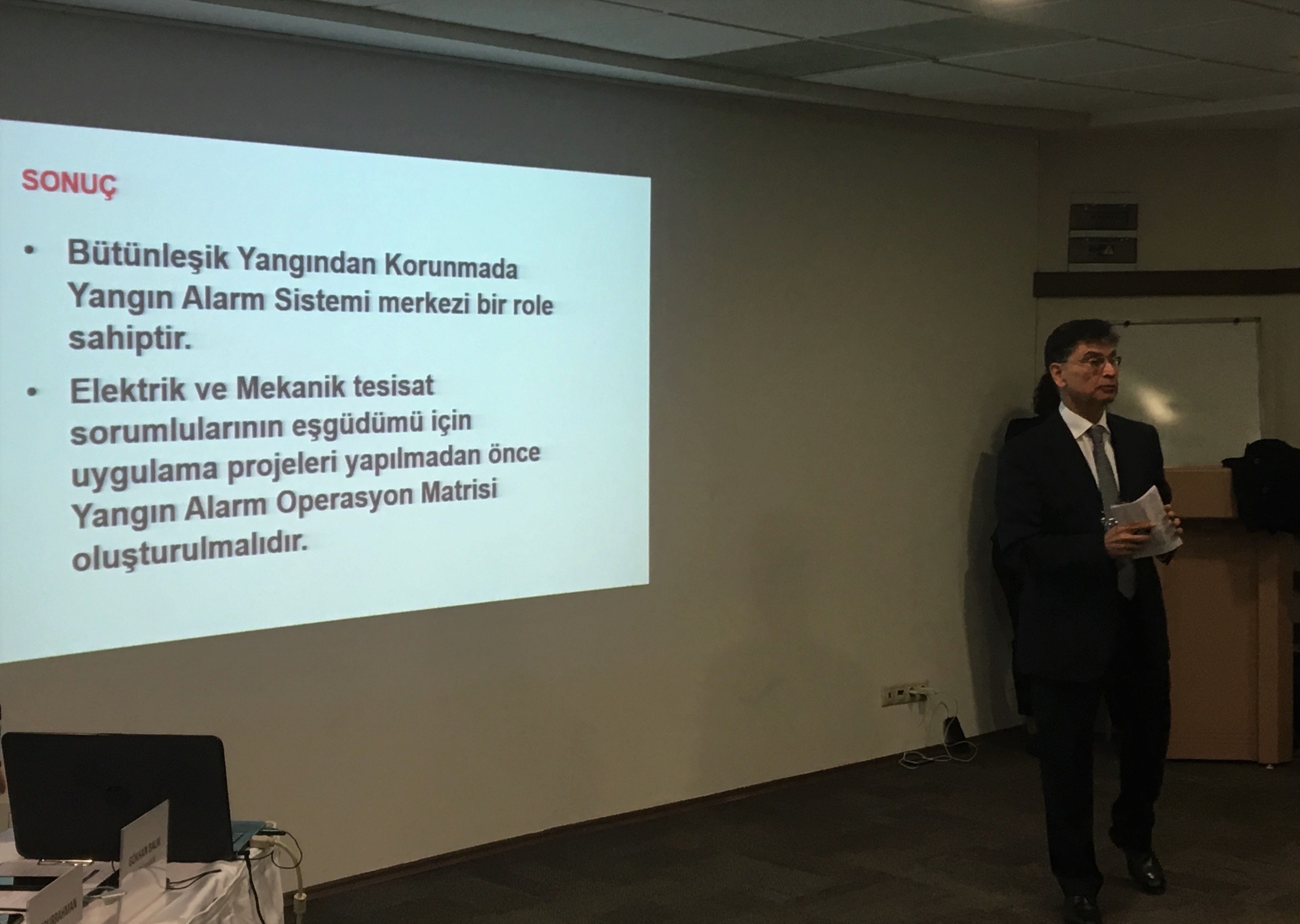TESKON – 14th National Plant Engineering Congress was held in Izmir Tepekule Congress and Exhibition Center between April 17-20, 2019 through the organization by Izmir Branch of the Chamber of Mechanical Engineers of the Union of Chambers of Turkish Engineers and Architects. “New Developments on Fire Security; Integrated Design of the Mechanical and Electrical Fire Protection Systems Seminar” within the scope of the congress attracted considerable attention. Many guests followed the seminar remaining standing although two rows of chairs were added when the audience did not fit into the hall. In the seminar, the statement made by A. Haluk Yanik, the Chairman of the Board of Directors of EEC Entegre Bina Kontrol Sistemleri, drew the attention.
In his presentation named “Interaction of the Fire Detection and Control Systems with the Mechanical Fire Protection and Other Building Control Systems”, Haluk Yanik described the concept of Integrated Fire Protection as the total reaction of the fire detection and alarm, mechanical smoke control and extinguishing systems installed in order to ensure safety of life and property in the building and the other building systems that may affect the functions of the systems to fire in interaction with each other. He mentioned about the functions of the Fire Alarm System under the headings, namely ensuring the life safety of those in the building, warning and removing them away with audible and light alarms, and ensuring the operation of the Integrated Fire Protection scenarios of the building by interacting with the other systems as the third important function.

He mentioned about the necessity for the interaction of the systems in terms of the security of the escape routes by commenting “For the automatic and manual operation of the Smoke Control System, its high-end bi-directional interaction with the Fire Detection System is required. The interaction with the HVAC automation systems should be ensured in order to notice the operation status on the HVAC side. The Smoke Control System directly controls the commonly used components such as dampers, fans and air conditioning plants. In the case of fire, the control of elevators and escalators must be taken by the Fire Detection System. The camera systems can be used to verify the fire alarms and for surveillance during the emergency management. The control of the fire exit doors kept closed by the access control system, the turnstiles and barriers at the building entrance and the doors located on the escape routes must be taken directly by the fire alarm system during fire. The interaction with the access control system also provides benefit for preventing the opening of the same by the Fire Detection System from being detected as a security breach by the access control system”.
Mentioning about the fact that the business manner in the construction industry of our country does not allow to design an effective Integrated Fire Protection in new projects, Yanik stated that the application projects which are implemented at a delayed stage for infrastructure and under time pressure are carried out only by taking into account the regulations and standards pertaining the System Operator’s own systems. He highlighted that the interaction with the other systems is not under the responsibility of any System Operator and there is no possibility to develop and implement an effective fire reaction scenario as no time remains for a collaborative work in this regard even if desired.
Haluk Yanik outlined the solution for this problem by commenting “The Strategy for Building’s Total Reaction to Fire must be established by investors, building operators and insurers in consultation with specialists prior to the commencement of the design works. This is the key document for ensuring the safety of life and property against fire in the building as well as usage/business continuity. A Fire Alarm Operation Matrix must be prepared by a team specialized in all fire protection systems and relevant building systems in line with the scenarios suitable for this strategy”.
Answering the questions of the audience after his presentation, Haluk Yanik, the Chairman of the Board of Directors of EEC, commented on the organization held by stating “The attention paid to the seminar was the indicator of the fact that the issue is on the agenda in the mechanical and electrical installation industries, expecting a solution. I hope the contribution of the engineering knowledge generated on the integrated fire protection design and application in the management and technical committees of TUYAK Fire Protection and Education Foundation and Association of Türkiye to the life safety of our citizens and the national economy would be maintained through similar events”